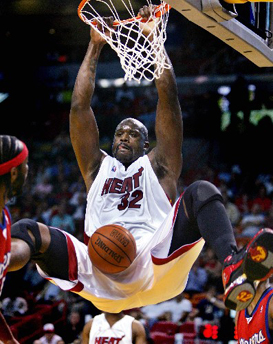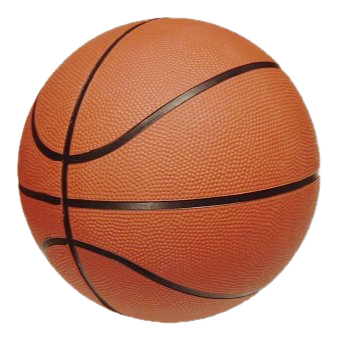
The Center, colloquially, the five, is one of the standard positions in a regulation basketball game. The center is normally the tallest on the team, and often has a great deal of strength and body mass as well. A typical NBA center is 6'10" (2.08 m) or taller.
In many cases, the center's primary role is to use his or her size to score and defend from a position close to the basket. However, modern centers typically have a more diverse skillset, being able to shoot from range as well as handle the ball and defend perimeter players. Nowadays, centers who can shoot from range are known as stretch bigs and are highly valuable to teams due to their ability to stretch the floor. A center who possesses size along with athleticism and skill constitutes an unparalleled asset for a team. The centers are also generally the players who are chosen to take jump balls.
Among current NBA players, Shaquille O'Neal of the Los Angeles Lakers is noted both for his enormous proportions, standing 7 ft 1 in (2.16 m) tall and weighing (officially) 325 lb (150 kg), as well for his mastery of elegantly simple post maneuvers. Yao Ming of the Houston Rockets stands 7'6" tall; his persistence and shooting touch are exemplary. Both have the awareness to make good passes when double-teamed.
There has been occasional controversy over what constitutes a "true center". Many have argued that Ben Wallace, while highly effective at center, is actually a power forward playing out of position, mainly because his 6'9" (2.06 m) height makes him considerably smaller than most centers he faces. Likewise, some would say that Tim Duncan, although listed throughout his career as a power forward, is actually a center, because of his size and style of play. In fact, he played more minutes at the center position than the power position towards the end of his career. [1]This is because it is believed that when Duncan entered the NBA, he played power forward in order to keep San Antonio Spurs teammate David Robinson playing as center and have two dominant big men on the floor. However, Duncan has continued to be listed as a power forward even after Robinson's retirement. Nonetheless, the judgment of whether a given player is a center or power forward is often highly subjective. Because there are currently so few people who meet the ideal size requirements of an NBA center, teams will sometimes find it necessary to play an individual at that position who would be more effective as a power forward. Jermaine O'Neal of the Toronto Raptors is considered both a center and power forward.
It should also be noted that centers and power forwards often have low free throw percentages. Because of this, it is not uncommon for the opposing team to purposely foul and therefore send them to the line, especially late in games. This has been a common strategy used against certain centers who have continuously struggled with free throws; examples include Wilt Chamberlain, Shaquille O'Neal, and Ben Wallace. The technique of fouling a poor free throw shooter in order to win back possession in the hope that the player will (as usual) miss his free throws, allowing the other team to gain possession of the ball, is sometimes known as the Hack-a-Shaq strategy.
Centers are among the leaders in blocks and rebounds and are said to "anchor" defenses. It is common for centers to roam the paint, and therefore block high numbers of shots, especially when their man does not have the ball.
The tallest player to ever be drafted in the NBA was the 7'8" Yasutaka Okayama from Japan but he didn't get any playing time. The tallest players to ever play in the NBA, at 7'7" (2.31 m) are centers Gheorghe Mureşan and Manute Bol (although Bol was said to be a few millimeters smaller). Standing at 7'2" (2.18 m), Margo Dydek is the tallest player in the history of the WNBA.
